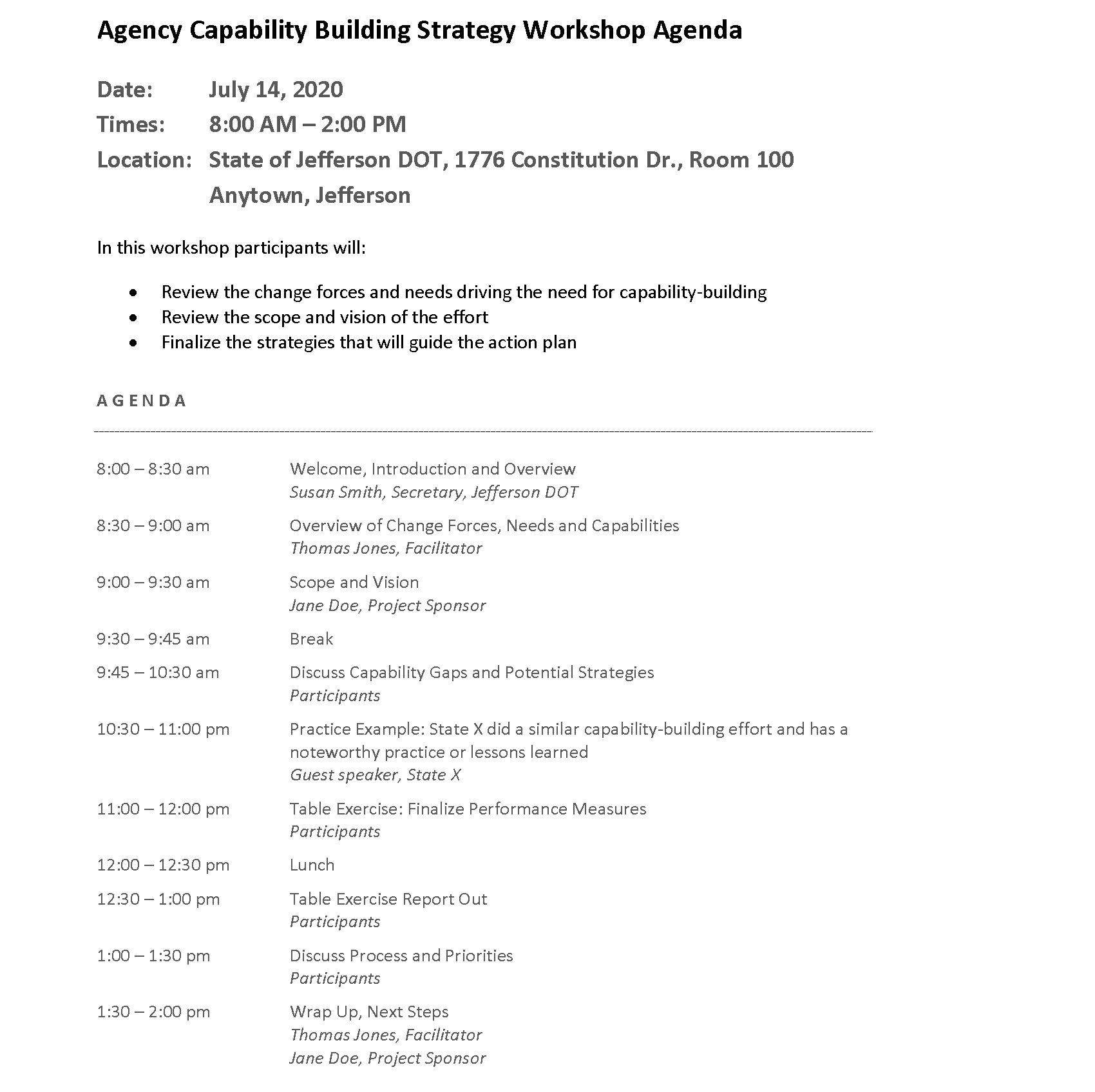Finalize the strategies that will guide action.
This step is the time to review the strategies selected as part of Step 1 and consider the decisions made during the Step 2 to ensure an appropriate level of detail is built into the plan before moving forward.
In the example in Step 2, the agency knows it needs to develop predictive analytics capability. Leadership developed a vision to establish data management and establish a process to link target setting and outcomes. Step 3 would be the opportunity to take a step back and think about all of the ramifications to tools, people and processes of embarking on this effort. Based on this step, the agency might refine their vision to comprise:
• using data management to coordinate financial systems data with planning and project data, and
• putting in place a formalized process to establish predictive analysis for all projects going forward.
It is possible that upon review, the scope and vision are too much to take on in one iteration. This is a good time to consider paring back the effort based on scope, scale and bandwidth.
Action planning for capability-building is meant to be flexible. This step might include adding strategies or preliminary steps that are outside of the current ACB framework. For example, perhaps an agency realizes that before it can embark on a data management effort, it needs to know additional detail related to the agency’s current state. This needs to happen before it can move forward. The agency may also determine that the action planning has a certain level of risk that requires leadership support. The agency decides it will need to free up a group of leaders to assist with the plan governance. This will involve temporarily re-assigning some responsibilities and bringing a project manager onboard to shepherd the initiative.
This is also the step to learn from those who have undertaken similar efforts in the past. This can significantly speed up implementation, reduce risk of failure and leverage resources, like templates and “how to” guides, that have been developed or used by peers. Those looking to take on a capability-building initiative would be prudent at this step to:
• review examples in the literature of how agencies used specific strategies to build capabilities, and
• examine strategies that have been untaken by peers to build capabilities in this area, and reported on their successes and lessons learned.
One possible approach that could be used at this step to finalize and fully develop the strategy is to host a cross-functional strategy development workshop. This format could help the agency move from conceptual scoping and visioning to practical planning and include all of the requisite knowledge, skills and perspectives to confidently move forward with an actionable set of next steps for documenting the action plan. The basic steps of a strategy workshop include:
Included is a sample agenda for a three-quarter day strategy workshop that can be adapted for state DOT use. By taking a step back for reflection on the scope and vision to develop additional planning details at this step, the agency can avoid the pitfalls of moving forward without a clear and achievable objective that is backed up by an actionable plan of next steps for moving forward.
By taking a step back for reflection on the scope and vision to develop additional planning details at this step, the agency can avoid the pitfalls of moving forward without a clear and achievable objective that is backed up by an actionable plan of next steps for moving forward.
• Are they comprehensive?
• Do the scope and scale seem appropriate?
• What additional detail is needed?
• Is there anything else we need to have in place before we start?
• Have we involved all the right people to ensure we have the detail we need to move forward?
• Are we fully aligned?
• Have we reviewed noteworthy examples and lessons learned?
• Have we got a solid set of next steps for moving forward?

